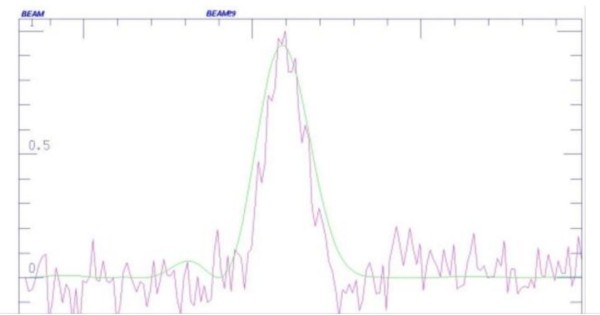The Search for Extraterrestrial Intelligence (SETI) has decided to investigate an unusual signal emanating from a star named "HD164595" located 94 light years from Earth first detected by an international team of astronomers on May 15, 2015.
Astronomers say it isn't clear if the signal is being transmitted by intelligent aliens, but said we should keep a close watch on this signal that's generating buzz almost as strong as the famous "WOW!" signal in 1977.
In 2015, researchers led by N. N. Brusilov using the RATAN-600 radio telescope in the Russian Republic of Karachay-Cherkessia revealed a "strong signal in the direction of HD164595," a planetary system in the constellation Hercules.
Italian astronomer Claudio Maccone and others described the signal as a "strong candidate for SETI." The signal, however, will be discussed at a meeting of the IAA SETI Permanent Committee on Sept. 27.
As of now, however, SETI is examining the radio signal and HD 164595. Seth Shostak, a senior astronomer with the SETI Institute, said "it's hard to understand why anyone would want to target our solar system with a strong signal."
"This star system is so far away they won't have yet picked up on any TV or radar that would tell them that we're here."
The SETI Institute is examining HD 164595 using the Allen Telescope Array in California.
Shostak said they so far haven't found any signals to match those originally detected by the Russian telescope. He cautioned, however, that "we have not yet covered the full range of frequencies in which the signal could be located."
"A detection, of course, would immediately spur the SETI and radio astronomy communities to do more follow-up observations."
METI International, an organization that searches for life beyond Earth, will observe the star from the Boquete Optical SETI Observatory in Panama. Astronomers will search for any brief laser pulses that might be sent as a beacon from advanced extraterrestrials.
"Without corroboration from an independent observatory, a putative signal from extraterrestrials doesn't have a lot of credibility," said astronomer Douglas Vakoch, president of METI International.
"The signal from HD 164595 is intriguing, because it comes from the vicinity of a sun-like star, and if it's artificial, its strength is great enough that it was clearly made by a civilization with capabilities beyond those of humankind," said Vakoch.
Vakoch also warned against undue optimism noting that the signal hasn't been detected by another Earth station.
"The greatest limitation of the May 2015 signal is that it hasn't been replicated. Before we can give any credence to a signal as coming from extraterrestrials, we need to see it repeatedly to make sure it wasn't just a transient phenomenon," said Vakoch.
Researchers surmise that if the signal came from a multi-directional, isotropic radio beacon, it would have to be produced by what's called a "Kardashev Type II civilization" or an advanced alien civilization capable of using nearly 100 percent of its host star's energy potential.


